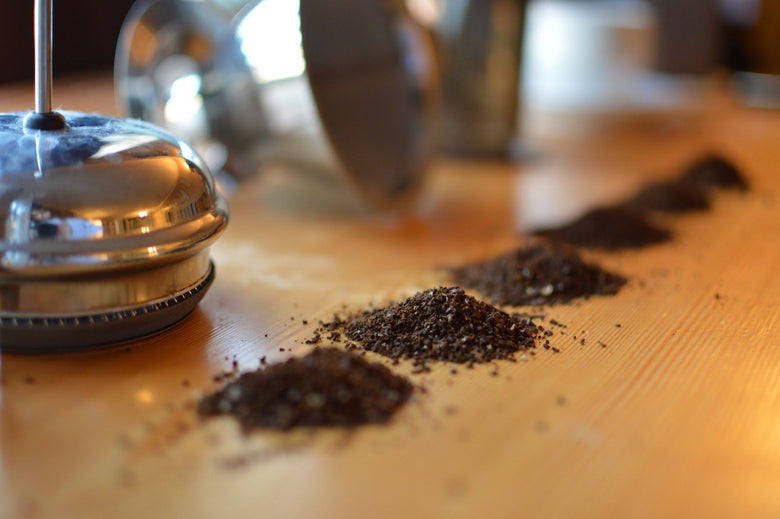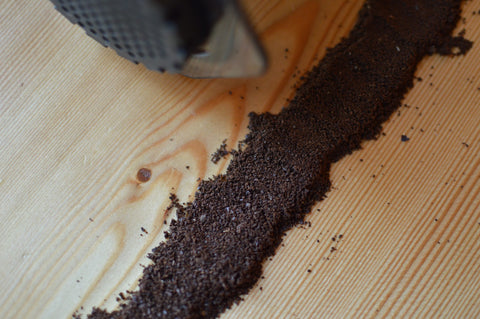If you’re a proud owner of a French press or espresso machine, you’ve no doubt noticed that the “regular” coffee grounds that come out of a pre-ground bag don’t quite do the trick. If you’re still new to the world of manual coffee brewing, you’re about to learn something very important.
Different coffee brewers need differently sized coffee grounds. There is no one-size-fits-all.
Coffee brewers come in different shapes and sizes. Some allow water to drain quickly, some slowly. Some brewers force water through the coffee, while others let the two sit together for a while.
A Brewer matched with the perfect grind size will produce coffee that is well-rounded and flavorful. The wrong grind size could make for a kitchen disaster - or just sad coffee.
No matter which brewer you use, this rule never changes: the finer the coffee grounds, the quicker it brews; the coarser the coffee grounds, the slower it brews. You can brew too much and too little, so finding that sweet spot in the middle is the goal.
Read: How To Brew Better Coffee By Adjusting Your Coffee Grind Size
Figuring out how to pair your brewer with the ideal coffee ground size may take a few brews of trial and error, but the reward is mind-blowingly balanced coffee. I know you’re after that, or you wouldn’t have read this far, so let’s get started.
The Challenge Of Communication
The way we talk about grind size is, unfortunately, vague. Since you probably don’t have a fancy device that tells you exactly how large a single coffee ground is (along with 99.9% of the world’s population), we’ll just use rough estimates.
- Coarse coffee grounds resemble thick kosher salt or pearl sugar. Each particle is distinct, and shapes can easily be seen.
- Medium coffee grounds more closely resemble coarse sand. The grounds are somewhat rough, but it can be difficult to see their shape.
- Fine coffee grounds are about the size of table salt. The texture is pretty smooth and consistent.
- Super Fine coffee grounds will remind you of a soft sandy beach where your feet feel like they’re stepping on clouds because the sand is so fine.
These aren’t rigid definitions at all, and there are any number of midpoints between two major categories. For example, if you see Medium-Fine, think of it as a coffee ground that’s on the finer side of the medium spectrum.
The French Press: Coarse
The French press is a method that allows the coffee and water to sit together for an amount of time before you filter the brewed coffee out and leave the grounds behind. In the coffee world, we call this immersion brewing.
Read: The Ultimate Guide to French Press Coffee
Most immersion brewers thrive with a coarse grind setting. It takes time for the water to penetrate into the deeper parts of the coffee bean, which makes it necessary to steep the coffee for a few minutes in a container before draining (thus, the French press).
This brewer also features a metal mesh filter to separate the grounds from the brewed coffee when you plunge it down. If your coffee was ground at a medium or fine setting, they would clog the filter and create a lot of resistance while you plunge, making the entire process a lot more complicated than it needs to be and possibly resulting in a mess.

Pour Over Brewers: Medium(ish)
There’s quite a bit of diversity among pour over brewers, so it’s impossible to give you a definite answer that speaks for all of them. On a general level, you can be confident that your pour over brewer will probably thrive somewhere in the medium realm.
Since pour over brewers allow gravity to drain the water through the coffee grounds, the grounds need to be fine enough to create a little resistance and slow the draining.
If the grounds are too coarse, and the water will fall right through the grounds without pulling much yumminess out - talk about weak, sour coffee. Too fine, and the water will get clogged and drain very slowly, producing a bitter and dull cup.
Our own JavaPresse Pour Over Dripper is a stainless steel filter with fine holes built in. These holes don’t allow the water to drain very quickly, so a medium-coarse grind (opposed to a medium or even finer setting) balances the brew out by keeping the water from over extracting with extra contact time.
The Chemex works in a similar way. It uses a very thick paper filter, which restricts the flow of water through a single hole. With more water-coffee contact time, a medium-coarse promotes a balanced cup.
The Hario V60 features one great big hole at the bottom of the cone and uses a thin paper filter, which doesn’t restrict the flow much. A medium-fine grind setting encourages a balanced brew by slowing down the draining and keeping the coffee from being under extracted.
Your good ole’ Auto Drip coffee pot most likely uses a medium-fine to fine grind setting (around what pre-ground coffee usually comes as), but some larger drip brewers used in commercial settings use medium-coarse since there’s so much coffee in the basket which restricts flow.
If this seems at all daunting to you, remember the simple rule for pour overs: the quicker the drain, the finer the grounds.
Immersion Cold Brew: Coarse
Cold brewing in a French press (or any other kind of vessel you have) is immersion brewing and follows the same grind size principle as the French press: the finer the grounds, the less time you need to brew.
Also similarly to the French press, using fine or medium grounds will result in a very reduced flow rate when you’re trying to filter the cold brew concentrate from the grounds, which can make for an annoying afternoon.
A coarse grind setting allows you to set the cold brew aside for 12+ hours, then filter it out with relative ease. This produces a rich, balanced cup and is easy to control.
Read: The Ultimate Guide to Cold Brew Coffee
Drip Cold Brew: Medium-Fine
Drip-style cold brew more closely resembles pour over brewing and also thrives with a medium-fine grind size.
Since the water is dripping slowly, and since cold water doesn’t brew coffee very quickly, a finer grind size slows down the draining to balance out the extraction.
Coarse grinds would allow the water to drip right through without becoming coffee. Fine grounds would keep the water from draining, and the result would be bitter. Gross!
Aeropress: Fine to Coarse
The Aeropress is a funny thing. You can use it as a french press with a coarse setting, you can use a fine grind to brew a concentrated shot of coffee, or you can do what most users do: something in between.
In our guide, shown here, we use a medium-fine grind and allow the coffee to brew for 2 minutes before we plunge it out. Some guides encourage a fine grind for 1 minute. Some encourage a medium-coarse for 3 minutes.
Whatever recipe you choose to follow, remember that finer coffee grounds brew more quickly than coarser ones.
Please, just don’t try to go down to super-fine grounds. You won’t be able to plunge the brewed coffee out of the grounds, and you’ll have to start over.
Moka Pots: Fine
Moka pots and similar stovetop brewers function by forcing steam through a bed of coffee grounds and into a cooler chamber where the water vapor becomes liquid again.
Read: The Ultimate Guide To Moka Pot Coffee
Coarse and medium grounds would allow the steam to pass through too quickly. Fine grounds, on the other hand, force the steam to extract solubles and oils from the grounds, which produces brewed coffee when the vapor liquefies in the cooler chamber.
Be careful not to go super-fine, however. That built up pressure in a Moka pot has to go somewhere; if it can’t go through the coffee, your kitchen walls may become coffee murals.
Espresso: Super-Fine
While there’s some margin for error with most brew methods, delicious espresso is utterly dependent on precise and uniform super-fine coffee grounds.
The idea is to brew a very concentrated and balanced shot (1-2 ounces) in 20-30 seconds. To achieve that level of concentration in that short amount of time (without it tasting like garbage), a lot of pressure has to force water through super-fine coffee grounds compacted into a tight puck.
Read - The Ultimate Guide to Espresso
No other grind size can accomplish this feat.
Go Forth And Brew
As long as you have a burr coffee grinder that you can rely on to give you consistent, uniform coffee grounds, you’re set to use any brewer with the proper grind setting.
Don’t be dismayed if your brew doesn’t come out perfectly the first time. Because of the difficulties communicating grind sizes, you’re bound to use a slightly different grind size than everyone else. Just make a tweak to your size setting and try again.
P.S. This is a really important part of making A+ coffee you love, but the real trick -- 90% of the secret of amazing coffee -- is the coffee beans.





